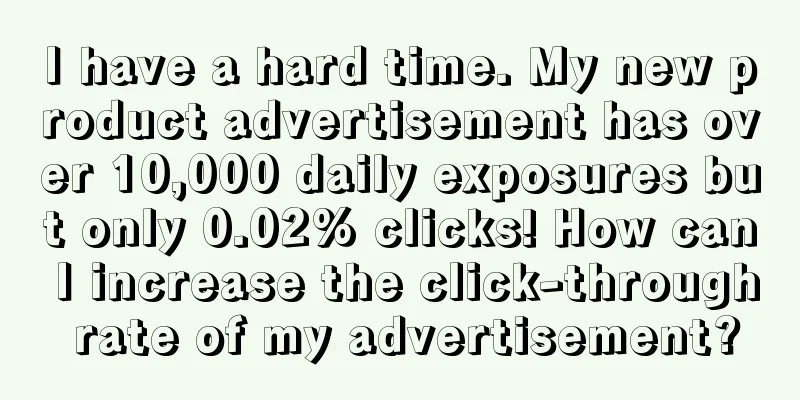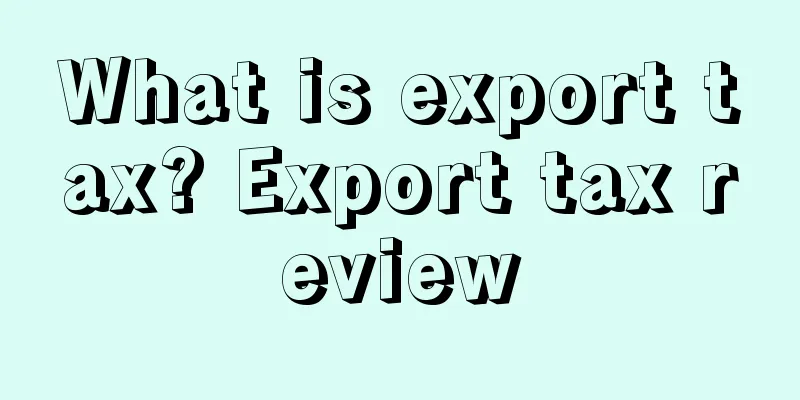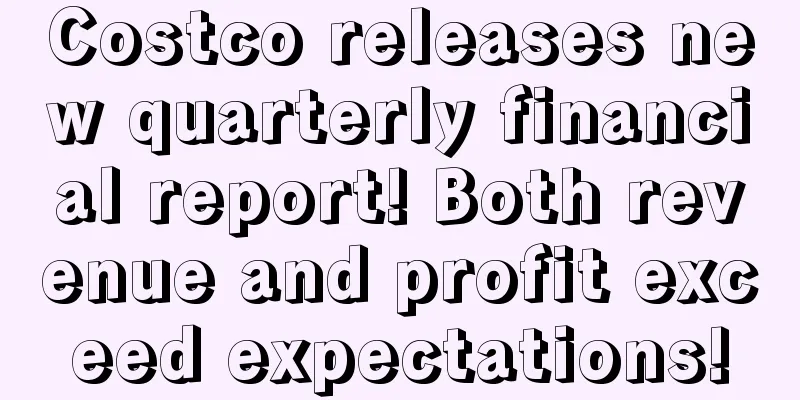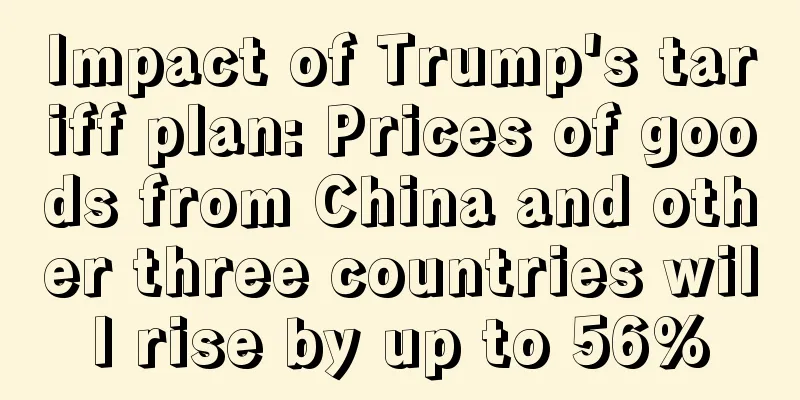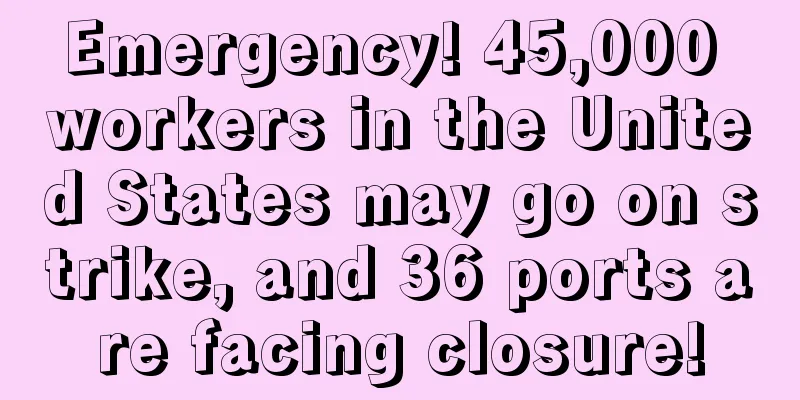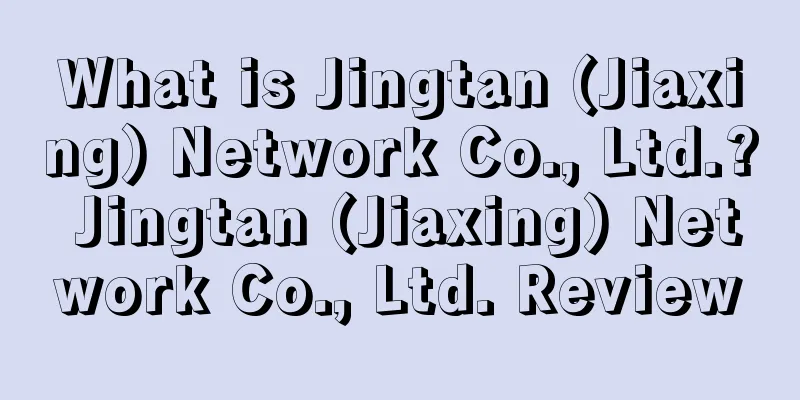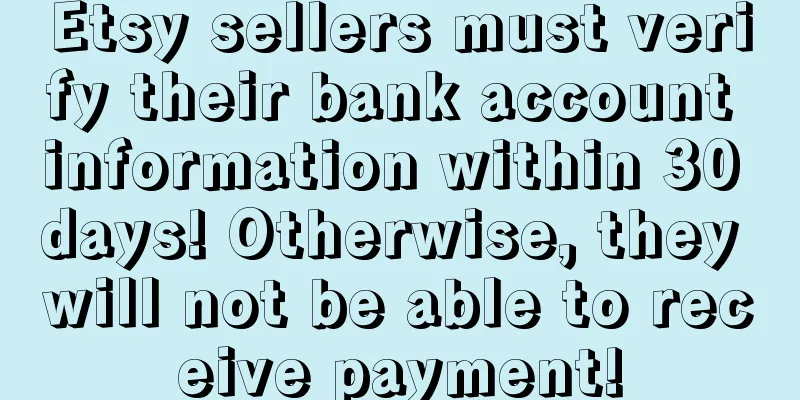|
New product on the shelves, 0 reviews, made a VINE but no one has claimed it, it has been on sale for 4-5 days. The price is 20+, which is considered mid-range in the category. There are few reviews in the category, but there are also few reviews that have not been reviewed.
The problem now is that there are too few clicks. The ad is exposed to more than 10,000 people a day, but the clicks are only 0.02%. I have tried to lower the price and change the main picture (A+ did not do it), but it didn't work. So now can we consider that the problem is that there are no comments? I put a 40% OFF offer outside the site, but it doesn't work.
Then I would like to ask the famous masters, what is the current
1. Reduce the price to a low-end selling price - if the price is reduced, will it match the low-priced products and people, and will it be difficult to increase it later?
2. Merge reviews - There were similar products that could be merged before, but the ratings were not very high, about 4.2/4.3. After the merger, VINE cannot be used. Does merging old links mean that there will be no new product support period?
3. Increase off-site sales with 60% off, and increase sales during the new product period. Is it feasible?
Ad data (clicks are worse after changing the main image, but the main image is made to imitate TOP)
Business data: Natural exposure is too low.
"Wonderful Reply"
Anonymous user Agree with: Please all EL, Xiaocaicaicai, Li Siting is here, everyone get out of the way, Hu Wa, jason25 more » After reading your description and everyone's answers, I've mentioned everything from selling price to advertising strategy to CPC, but I don't think I've seen anyone mention coupons. I want to talk about this based on my own experience (just my humble opinion, please don't criticize me if I'm wrong, I welcome everyone to correct me!!)
[I have tried to lower the price and change the main picture (A+ didn't do it), but it didn't work. So now can we consider that it's a problem of no reviews? I put it on the site with a 40% OFF but it won't work. ]
- Have you tried using coupons? How much was the discount?
As everyone says, launching new products nowadays is difficult!
Moreover, the price of your product is considered mid-range in the category. Without the support of a large coupon, the click-through rate and conversion rate of the new product will probably never go up.
Generally speaking, in my personal experience, new products are launched with a suitable price + large coupons (40%+). When the keywords are included and the ranking rises to a certain level, the discount will be slowly reduced. Of course, this also depends on how much loss you can bear.
Opening a large coupon also provides a separate traffic entrance, which also expands a part of the traffic. Why not do it?
And after the big discount, the speed of Vine's collection has increased significantly (depending on the product)
Amazon's unchanging truth: Traffic brings conversions. If you don't have clicks, where will the traffic come from? So you should first consider increasing the click-through rate and the number of visitors. After you have clicks, you can consider the conversion issue later (it depends on whether your listing can make customers pay for it).
Now your product is in the new product stage, with 0 reviews and no price advantage. It is recommended that you give priority to using large coupons to increase your search page advantage and attract consumers to click .
For your questions:
1. Reduce the price to a low-end selling price - if the price is reduced, will it match the low-priced products and people, and will it be difficult to increase it later?
- It is easier to lower prices than to raise them, unless your product has a particularly good conversion rate. So don’t consider lowering prices unless it is absolutely necessary. Start by testing with a large discount. If that doesn’t work, try changing the form of the discount.
2. Merge reviews - There were similar products that could be merged before, but the ratings were not very high, about 4.2/4.3. After the merger, VINE cannot be used. Does merging old links mean that there will be no new product support period?
- Your product has just been on sale for 4-5 days. I personally think you don't need to rush to merge the old link. Because as you said, you can't use VINE after the merger, so wouldn't that be a waste of the opportunity to reply to the review? And it's hard for you to know whether there is a problem with this product through other people's reviews, because you merged the previous product. You can wait a little longer. Generally, Vine collection sometimes takes effect after one or two weeks of opening.
3. Increase off-site sales with 60% off, and increase sales during the new product period. Is it feasible?
- It is not impossible to increase sales during the new product period, but it is really hard to evaluate the effect of off-site promotion (maybe it is my resource problem). If you have good resources, you can consider giving it a try, but you need to think about how to stabilize sales after the off-site promotion ends, so as not to lose too many orders, which will also have a bad impact on the links.
Ad data (clicks are worse after changing the main image, but the main image is made to imitate TOP)
- You need to look at your advertising structure. Is it all targeted? Or broad? Automatic?
Are the search terms generated by the ad highly relevant to your product? If the search terms in your ad are not highly relevant, it means that all your exposure is invalid, so it is understandable that the click-through rate is low.
If the search term relevance is not high, you need to consider the issue of buried keywords in the listing.
Hope it helps! Xiaocaicaicai • Shenzhen I think what you said is very good. The biggest problem is that there are exposures but no clicks. So we need to analyze why there are no clicks. Is it because the traffic you are exposed to is irrelevant, or is your product not competitive?
Anonymous User • Guangzhou After reading your reply, I found that I didn't seem to have mentioned the main point. So I want to add:
Data analysis is to analyze the data to find out what problem we are facing now? What factors are related to this problem? What adjustments can we make based on these factors?
From the subject's description and data, we can conclude that the click-through rate is low.
So the first thing we need to solve is the problem of click-through rate.
Can you think about the factors that affect click-through rate?
1. Main picture --- Do you want to try to change it?
2. Price --- Is it too high? Are there other offers that can lower the price?
3. Ratings and number of reviews --- Are there any reviews and what are the ratings?
4. Keyword relevance--- Does the advertising data show some irrelevant and broad words?
5. Coupon Strength --- What is the discount for the competitors around your position? What is your discount?
6. Display position--- If your product appears at the bottom of a page, it is very likely that it will only be exposed but not clicked, because many consumers will not browse the products at the bottom.
7. Delivery method and delivery time --- since it is FBA, this factor should not have much impact.
After we check the above factors one by one and make corresponding adjustments, it will be clearer.
Anonymous User • Shenzhen @Anonymous user:
1. The main picture has been changed, but the effect is not significant.
2. The price is in the middle and has been reduced
3. No comments, it is a new product
4. All keywords are relevant. No invalid keywords
5. We have added a 10% coupon and are considering increasing it to 30-40%.
6. After yesterday’s tips from netizens, I found the problem with the ad, which is that it is displayed only on the product page. Now I suspect that this is the problem. A large number of product page displays lead to a low click-through rate. Now I have lowered the bid a little and tried the fixed + BID method. But it seems that even with the BID at 200%, there is still no display. The current bid exceeds the bid of the product at the same period last year. The ad now uses two types: automatic (increase and decrease) + manual phrase (fixed). Today, I am mainly testing whether adding bids can get more search displays, but the situation is not optimistic.
May June • Ji'an What should I do if there are exposures and clicks, but the advertising budget has been used up and there are no orders, but there are two or three natural orders per day? I am worried that if I turn off the ads, there will be no natural orders.
Anonymous user @MayJune : Ad traffic will affect organic traffic to a certain extent. So if you can still get organic orders, it is recommended not to cut off all ad traffic at once. You can slowly reduce the bid and budget, and then add other words for testing to avoid affecting organic traffic due to too much drop in ad traffic.
In addition, [there are exposures and clicks, but the advertising budget has been spent and there is no advertising leaflet] First, you need to see what kind of advertising you are running:
1. If you are using automatic and broad search, you can first check the relevance of the search terms to see if the lack of conversion is caused by low relevance;
2. Check where the ads are placed. If they are concentrated in one location, such as the product page that does not generate orders, you can consider adding bids to other locations to see how they convert.
3. Check the location and time of your ad display. If your ad budget is used up before Americans start shopping, consumers will not be able to see your products when they are shopping, and your ad will not generate orders. In this case, you can make adjustments with the new time-sharing bidding in the background;
4. Don’t stick to one word. If this word doesn’t work, try another word (you can see which words have natural positions). It doesn’t matter if it’s a black cat or a white cat, as long as it can catch mice, it’s a good cat. If you think that word is really important, you can start with the long-tail word of that word and slowly increase the weight. Otherwise, it’s useless if you keep sticking to it and it doesn’t produce any orders.
Finally, of course, you need to check your own listings for problems, such as whether there are negative reviews on the homepage, whether there are other competing products under your listing that have taken away your orders (however, if there are natural order conversions, this factor may not have the greatest impact, but it can be listed as an observation object)
Anonymous user @半分糖: New products have a relatively low weight, so it is indeed difficult to grab a position on the homepage, after all, there are only a few positions on the homepage. Other top sellers certainly don’t want to lose this position. So it doesn’t mean that the homepage is necessarily the best, but the one that suits you is (unless your product is really good and the price can also attract consumers, in which case you can consider going directly to the homepage)
If the product itself is not good enough and there are no reviews, it is recommended to try other ad positions and keywords. The most important thing is to find keywords and positions that have advantages for you.
Anonymous User • Guangzhou @人生赢家哈哈哈哈: Low exposure also depends on the specific data. Generally speaking, exposure is related to advertising budget, bidding and the search volume of your keywords. You can check the following factors:
1. Advertising budget: How much is the daily budget? Can it be spent every day? Or will it be spent before others make purchases?
2. Bidding: Bidding too low will result in the ad being placed at the back, making it difficult to get exposure.
3. If the search volume of the keywords is too small and very precise, the click-through rate will be good but the exposure will be poor.
A worker with a dream Support from: ddy130, ThreeBucks, Please All EL, City Memo, Beauty of the East 1. Reduce the price to a low-end selling price - if the price is reduced, will it match the low-priced products and people, and will it be difficult to increase it later?
After the price reduction, the system will position your product near the price range, which is what you call matching low-priced products and people. After that, when sales are stable, you can restore to the market average level by increasing the price by 1-2 US dollars each time. During the price increase period, you must cooperate with advertising or off-site to maintain stable sales. The price increase period will be longer, so it is not recommended to reduce the price too much at the beginning.
2. Merge reviews - There were similar products that could be merged before, but the ratings were not very high, about 4.2/4.3. After the merger, VINE cannot be used. Does merging old links mean that there will be no new product support period?
Whether the sales of the merged old links are stable has a certain weight. If the sales of the old links are average or they are abandoned links, the weight of the new products will be lowered. I don’t know if it is because some products have not contacted customer service to update the comments. After we merged the new and old sub-bodies recently, the comments were not merged, the new sub-bodies still have 0 comments, and even the product rankings are different. I don’t know if this has happened to other people.
3. Increase off-site sales with 60% off, and increase sales during the new product period. Is it feasible?
For off-site operations, it depends on your cost investment. If you have sufficient budget, you can give up profits to rush for a ranking, but you must ensure that the natural orders or advertising orders on the site can increase steadily, otherwise there will be no orders once the off-site operations stop. The purpose is still to provide the weight of the link itself.
Talk about the problem
1. The click-through rate is too low. I don’t know if it’s because of your category, but the click-through rate is too low. First, I suggest adjusting the main picture and re-embedding the keywords. Don’t imitate others in the main picture. Change the composition, layout, color, etc. to increase the click-through rate.
2. The advertising budget is too low. Control CPC and budget, and try to get 5-10 clicks on the product every day. The CPC can be lowered a little, but the number of clicks must be guaranteed. Only with clicks can there be conversions. Sufficient traffic budget is required to test the conversion or problems of the product.
3. Keep a calm mind. New product promotions are all like this. They have only been on sale for 4-5 days, so it is normal that the natural traffic is low in the early stage. Except for particularly excellent and unique products, new products that imitate others are definitely not as powerful as other old sellers. What you need to think about is how to attract traffic from other links and improve conversion. In the early stage, boldly test more SKUs, decisively give up those that do not perform well, focus on cultivating those with high conversion rates, and launching new products also depends on luck.
Chen Binshea Agree from: ZLong123 This is my first reply. If there is anything wrong, please point it out. Let’s communicate more and don’t criticize me.
I think a core factor is the decline in demand. This question was asked on December 20th. You promoted it around December 15th. At this time, there was still a little traffic, but why would you get traffic as soon as your new product came out? Even if you caught the tail traffic in mid-December, you will soon face a decline in demand. Looking at today's overall orders, you will know how low the traffic is now. Foreigners are celebrating Christmas, and the demand for shopping has obviously decreased. The peak season in the second half of the year is over. Use ABA to check the search performance of core keywords. Is the current search query volume - display, click, add to cart and order obviously declining? Pushing products when demand is declining, unless your product is extremely popular, I think the probability of rising is very low. In the case of limited traffic, Amazon will give priority to those head links that sell cheaper than you, have more advertising investment, orders, and reviews than you.
Optimize the click-through rate according to the specific problems of the product. Optimize the click-through rate if there is a problem: find out the factors that affect the click-through rate, check and analyze them, and make a final optimization plan.
Main picture - whether it is attractive, whether the display of the main picture can make buyers see it at a glance, and whether it is highly homogenized. (I don’t really understand why the pictures are changed 4-5 days after the new product is put on the shelves. If it is in our company, I think this operation may not have done enough preliminary preparations and just messed around. Before putting on the shelves, the overall link situation needs to be optimized. If you are not sure about the product pictures, just change them until you are satisfied. Of course, there is our own subjective consciousness, but how can we judge that there is a problem with the main picture when there is relatively little data on new products? It should be normal for the advertisement to be exposed on the product page and have a low click-through rate. Even if you want to change it, I suggest using the A/B test in the brand function section to test the main picture instead of changing it directly. If you change it directly, the Amazon system has not yet clearly identified your product or picture, and it needs to be re-identified and included, and frequent changes are made. Isn’t it telling the Amazon system that there is a problem with my product and I need to change it again and again?)
Title - Does it clearly express your product and highlight the selling points of the product? The keywords must be filled in correctly, and then the selling points should be highlighted as much as possible, so that buyers can see the highlights of our style/the difference with other styles from the title. Especially now that the share of mobile phones is growing, the importance of mobile phone titles needs to be increased.
Price - Determine based on your target group and the prices of your market competitors. Low prices are not recommended, but new products can start with a slightly lower price. If it is a product with a high customer unit price, then it is normal for your click-through rate to be lower, but your selling price is only over 20 US dollars, so this aspect will not have a big impact. (The impact of price ultimately depends on the competitive situation in the market)
Discount intensity - the discount situation of competitors in the market (especially those with similar products to yours). If everyone’s discount is 50%, your initial 10% discount will not be enough (coupons, membership discounts, promotions, etc.).
Star rating, number of reviews - the star rating situation in the market. If there is a real need, you can consider direct reviews or merged variants. This also depends on the overall market situation. If the overall star rating and number requirements are relatively high, it is still necessary to have ratings and rating numbers as soon as possible.
Delivery method - Generally, we are doing FBA now, so normally there should be no problem, but there is a very important point here. Amazon recently showed that it may arrive after Christmas. This will affect conversion (it is related to whether your inventory is on the shelves, the location of the warehouse and the distance between the consumer), so I said at the beginning that your time is wrong.
The location of the product is closely related to the location of your product display. If your surroundings are highly rated and your price is low, can your click rate be high? This location may be a natural position or an advertising position, you can check it out. The click rate of the product exposure position in the first 3 pages of the search results page will be higher.
The relevance of keywords placed/keywords recognized by Amazon - the first thing to say is whether the layout of the title, five bullet points, description, search terms, etc. is correct. If the positioning and layout of your keywords are deviated, then the probability of success will be very difficult, and Amazon's inclusion of your products will also be deviated; the second is the keywords you place in your advertisements, the relevance of the keywords, and insufficient relevance of the keywords will definitely result in insufficient click-through rate. Then the size of your keywords will also have an impact on your click-through rate, which is mainly reflected in whether it is a big word or a small word. Your click-through rate will be higher for core and precise small words, and it is possible that the click-through rate of big words will be lower. For example, if you are selling an iPhone 14 phone case, and the keyword you place is phone case, which one will have a higher click-through rate, this word or the iPhone 14 phone case?
Is the product category placed correctly? The wrong product category will affect traffic distribution; or is there a better category to enter? Sometimes the promotion difficulty of a product in different categories is completely different. The crowd prices are also different.
In advertising: It should be because of the time-sharing budget. I see that the current budget is $1 for advertising campaigns.
When a new product is launched, you need to set up corresponding ads. I don’t recommend running a lot of ads before Amazon recognizes your product. The more traffic you have, the more trouble you will have if the conversion can’t keep up. If you are not sure about your peak order time, I don’t recommend starting a time-sharing budget, unless you have worked in this category and know the order time period.
Here is a brief introduction to advertising: New products need to let Amazon recognize your products. If you have products that have been made before, you can find keywords that perform well to place them. This is more accurate than automatic advertising recognition. From this case, I have made similar products, but I should not be very familiar with them. For products that you are not familiar with or have little grasp of, you can start with automatic closeness, depending on the budget. If the budget is sufficient, you can open it closely with similar products. First, let the system grasp what the product is and make corresponding traffic recommendations; run out inaccurate keywords and ASINs that cannot compete to make corresponding negations (accuracy and phrases are selected according to the situation). Generally, I will run it for 2-3 days first, and negate the words/ASIN in time; the words/ASIN that are run out are more suitable for the product, and then gradually start manual advertising (accuracy, phrases + broad, ASIN, category) and gradually open advertising according to the operation rhythm; gradually increase the advertising budget according to the page situation, and increase the advertising type SP+SB (SBV) (there are high-quality good reviews, star rating 4.3 and above, the number exceeds 10-20% of the sellers in the market, if the number is limited, you can also temporarily set 10-15 reviews); advertising is very complicated, you can look at other posts.
For the bidding model of advertising, I suggest that new products can start with fixed bidding . For precise keywords with a certain search volume, it is recommended to have one keyword per advertising campaign and one advertising group for easy regulation. Precision words with relatively small search volumes can be put together in groups of 10 to 15. Phrases and broad words can be put in one advertising campaign and rejected in a timely manner.
1. Reduce the price to a low-end selling price - if the price is reduced, will it match the low-priced products and people, and will it be difficult to increase it later?
Whether to lower the price depends on the competition in your category. If your category is a fiercely competitive red ocean, it will be difficult to raise the price after lowering it. In a blue ocean, you can consider lowering the price appropriately, but it is recommended to raise it as soon as possible. Low prices are not a long-term solution. If the category is no longer profitable and the order volume is not increasing, no one will be able to make money.
2. Merge reviews - There were similar products that could be merged before, but the ratings were not very high, about 4.2/4.3. After the merger, VINE cannot be used. Does merging old links mean that there will be no new product support period?
I don't think this case is urgent. You can try it first. The product seems to have not been promoted yet. The rating and the number of ratings have an impact, but they are not the most important. If the rating and the number of ratings do have a great impact, then they can be merged. Don't consider whether it is a new product period. If you can't place an order, what's the point of having a new product period. If there are reviews in the link later, it is not impossible to remove the merged one. But here you need to pay attention that the subsequent VINEs that have been merged cannot be released. For example: you put 30 and received one. At this time, only this one will be reviewed, but the next 29 will not be released, and VINE will also stop. At the same time, if you put 30 before, Amazon will take away $200 when the first review comes back.
3. Increase off-site sales with 60% off, and increase sales during the new product period. Is it feasible?
Whether it can be done depends on the product positioning. Clearance can be done without hesitation. Seasonal styles will not be sold after this year. Just do it. If 60% is not enough, increase it. If it cannot be sold, liquidate it. If the company supports it, you can make a strategic loss. First, build up the links. After the off-site sales, stabilize the sales.
Sad Wang Dazhuang - Junior Operations Agree from: DTMDPD, Linsanity, jiajia12138, 浅笑喵喵, City Memo More» I want to share a personal case. I recently promoted 3 non-standard products. The click-through rate was extremely low despite the SP precision and without exception. It may be because of the fierce competition for advertising space. Good positions will be promoted to more profitable products on the platform, and new products are allocated to the detail page. This situation seems to have started this year, probably because the algorithm has been changed. It is also ugly to force new products to other positions without advantages. I have used fixed + bid for several products and they have been stuck on the homepage and other pages. Without exception, the acos have exploded.
I saw the black water management theory on the forum before and it makes sense. Product A has 6 reviews on Vine and a score of 4.6. A 20% coupon is used to gain a price advantage (high price, a few dollars lower than the competition after discount). The sp automatic + precise click rate is less than 0.1%, and there are almost no orders.
Later, I changed my mind and used SP broad SBV precise product set and precise ads (I have been working in this category for a long time and I know what words to invest in). The overall CPC is 0.7, the click rate is 0.6%, and the acos is 20%. The sales volume is in an increasing state. After a few orders, I canceled the coupon and reduced the price to get the struck-out price. Because the price is slightly higher, the struck-out price looks like a big discount. After half a month of promotion, there are more than 10 orders a day under the multi-variant parent body. Xiyoucha has included a lot of precise words, and the natural traffic also accounts for 25%. One thing to note is that the product set can achieve the same effect as SP precision through limiters. SBV doesn’t work. If SP doesn’t work, you can try other types of ads. A cat is a good cat if it can catch mice, whether it is black or white.
===============
1. Reduce the price to a low-end selling price - if the price is reduced, will it match the low-priced products and people, and will it be difficult to increase it later?
Who knows Amazon's algorithm? There is no official data to support it. The ones that have increased will tell you that it is OK, and the ones that have not increased will tell you that it is not OK.
2. Merge reviews - There were similar products that could be merged before, but the ratings were not very high, about 4.2/4.3. After the merger, VINE cannot be used. Does merging old links mean that there will be no new product support period?
I closed a product, but it was no longer available the next day. I checked it the next day, so it may have been no longer available after closing.
3. Increase off-site sales with 60% off, and increase sales during the new product period. Is it feasible?
I am poor, and I have never burned anything outside the site. I mainly use the site. I can only share the experience within the site with you for reference. Chris • Guangzhou I am also a non-standard person. I have been working on a category and I am familiar with keywords. I would like to ask about your current advertising structure and ideas. Is SP a broad keyword? What is the appropriate SBV? (I saw that you mentioned here whether to use precise keywords and product sets?)
How to become a rich woman • Dongguan Later, I changed my mind and used SP, SBV, and targeted a few ads for precise product sets (I have been doing this category for a long time and I know what keywords to invest in). The overall CPC is 0.7, the click rate is 0.6%, and the ACOS is 20%. Sales are in an increasing state.
Is SP broad bidding low price? How much difference is there with precise bidding? I bid too low but there is no exposure and click.
Sad Wang Dazhuang · Suzhou @如何成为富婆: Generally speaking, broad is lower than precise. I am used to recommending bidding directly. I am lazy and will adjust it slowly later. I am just sharing an idea. You can try other types of ads. Ads are tested. What I say may not be suitable for your product.
Sad Wang Dazhuang · Suzhou @尘尘chris : Non-standard keywords perform too poorly. After all, they are not that relevant. I don't use them in the early stage. I usually do long-tail keywords first. If the product is made up of these keywords, I will combine these keywords and use them together. SBV is used as a less accurate SP. I usually use SBV for all long-tail keywords and then filter out the poorly performing ones. This is fast. If you have a large budget, you can do this. Or you can throw in the widely used and automatically ordered keywords and test them slowly. If your category is highly competitive, SBV may not be suitable.
City Memorandum • Guangzhou According to this idea, can we increase the number of accurate words and natural traffic by only using SP broad and SBV precise?
Sad Wang Dazhuang · Suzhou @城市笔记: Yes, I did non-standard long-tail keywords in the early stage, but the conversion rate was too low. Although SBV is not as accurate as SP, the long-tail keywords of my product are all composed of several words, so they are basically not too distorted. The order is also weighted. The click-through rate and conversion of SBV are higher than SP. If the CPC of SBV in your category is not so high, you can invest in it, and the ACOs are very good. If there are several similar products or complementary products in the product set, you can try it. The main thing is to promote many old ones and bring new ones. In comparison, the effect of SBV is better. There was a product that was purely invested in SBV precision and wide range before. In one month, 20 orders were issued every day. The ratio of natural and advertising orders was 1:1. There are also disadvantages, which is not as rough as SP precision weighting. I invest in all long-tail keywords together. In the early stage, I mainly look at the inclusion and BS ranking, and I don’t pay much attention to the ranking of a single word. When the link is improved, I want to invest in which word and then invest in SP precision separately. The effect will be better than investing in new links directly. What else can I do? The goods have been shipped, but the SP is accurate but has no click-through rate and no conversion. Why not try other types of ads?
yeyeyep Agree with: unnnnnn, Internet's Little Cabbage Hello, here are some suggestions
1. Reduce the price to a low-end selling price - if the price is reduced, will it match the low-priced products and people, and will it be difficult to increase it later?
If there are no reviews for new products in the early stage, I think you can increase the discount to see the effect. Of course, the advertisement should also be larger. The main keyword can be added to the homepage bid. If you directly lower the price, the effect may be more obvious in the early stage, but it is really difficult to increase it in the later stage. Every time the price increases, Amazon's algorithm will change, which will have a relatively large impact on the link.
2. Merge reviews - There were similar products that could be merged before, but the ratings were not very high, about 4.2/4.3. After the merger, VINE cannot be used. Does merging old links mean that there will be no new product support period?
If you plan to apply for Vine, you can post another ASIN as a Vine sub-body, and then you can directly merge and use it later; if you want to apply for Vine as the main body, that's also possible, but if the number you apply for is 30, you need to wait until all 30 products have been claimed before you can merge, otherwise if you merge before all the claims are made, you won't be able to continue to claim them later, but it won't affect the reviews of the products that have been claimed before; there is a saying that merging old links means there will be no new product support period, but based on my experience, merging old links still has a new product support period, and it doesn't affect the promotion of new products
3. Increase off-site sales with 60% off, and increase sales during the new product period. Is it feasible?
I think it is feasible. In the early stage, you can place orders to increase sales and conversions, and then lower the discounts when it stabilizes in the later stage.
4. To increase link exposure, you can make a main picture video, and upload a few buyer shows, and also A+. These are my experience and suggestions. I hope they can help you.
°Accompany 1. Reduce the price to a low-end selling price - if the price is reduced, will it match the low-priced products and people, and will it be difficult to increase it later?
I think when the product is new, you should not directly reduce the price to a low price. This will make Amazon think that your product is only worth this price. If you need to increase the price later, you may receive a notice from Amazon that the price violates the market. In fact, the lower the price of a product, the more advantages it has. It mainly depends on whether the product is suitable for the public and whether it can attract buyers.
2. Merge reviews - There were similar products that could be merged before, but the ratings were not very high, about 4.2/4.3. After the merger, VINE cannot be used. Does merging old links mean that there will be no new product support period?
I haven’t done vine, but merging old links will indeed result in a loss of the new product support period, and Amazon likes to settle accounts after the event. For example, we merged products for several months and were suddenly warned of illegal operations. Therefore, the new product period does not necessarily have to be lost due to reviews. You can get higher conversions through big coupons, buy-one-get-one-free discounts, etc.
3. Increase off-site sales with 60% off, and increase sales during the new product period. Is it feasible?
The current off-site traffic is not like before, and in fact, the off-site traffic is very mixed and difficult to get a good conversion. The current off-site traffic is too rubbish, unless your product is really good. And there is a risk of off-site traffic. If your product is very good and the off-site effect is very good, but you don’t have a good inventory strategy, it is easy to cause inventory to not keep up, and the sub-links will also be greatly affected.
milkfans - Paddling without oars Agree with: Guoliguoli, Luo Bi Da, farion, Keduoli, Xiaocaicaicai More» Now all the new products are in this state. My new product has a score of 4.7 and more than 20 positive reviews. It has been promoted for 3 months, but it is of no use. The click-through rate of the ads is around 0.05%, and the traffic exposure is all on the product page. Price reduction is of little use. Now is the off-season, and competitors are out of stock and have reduced advertising, but their sales have risen. The link still needs stimulation to function normally. You can slowly work on this link and it is guaranteed to get orders.
There must be comments, the main image must be at least above average, the price must be slightly lower than the market average, and use fixed automatic testing for advertising. It's fine as long as you can buy the rest of the positions. If not, start all over again. In the early stage, identify one advertisement and give enough budget. It's useless to start 100 advertisements with a budget of $1 for each. Also, don't control the budget by time and adjust the bidding by time. It's all a waste of money. Keyword inclusion is the top priority.
|
